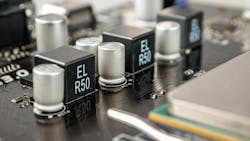How to Select a Transformer for an Isolated Buck Converter (Download)
An isolated buck topology (Fig. 1) is similar to a generic buck converter. By replacing the inductor in a buck circuit using a transformer, we can get an isolated buck converter. The transformer’s secondary side has an independent ground.
During on-time, the high-side switch (QHS) is on and the low-side switch (QLS) is off. The transformer’s magnetizing inductance (LPRI) is charged up. The arrows in Figure 2 show the current flow direction—the primary current increases linearly. The current ramping slope depends on (VIN – VPRI) and LPRI. The secondary-side diode, D1, is reverse-biased during this time interval and loads current flow from COUT to load.
